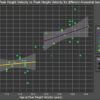People who have visited the emergency department for fainting are no more prone to car crashes than other emergency department patients, new research out of UBC’s faculty of medicine has found.
How do we know this?
The research team tracked the driving records of more than 9,200 people who visited an emergency department for fainting (known in medical terms as syncope).
In the year following their emergency department visit, 9.2% of people with syncope were involved as a driver in a car crash. Among people who visited the emergency department for other reasons, 10.1% crashed in the following year. About 8.2% of drivers in the general public are involved in a crash per year.
Researchers concluded that, under current restrictions that prevent driving only for those with the highest risk of another faint, the risk of crashing a car was not higher in the year after syncope.
What about the first few weeks after a fainting spell?
Syncope patients did not exhibit increased crash risk during the first 30 days following their emergency department visit.
What does it all mean?
Syncope prompts about 1.3 million emergency department visits in the U.S. each year. The evidence shows there’s no need to impose additional driving restrictions on people who have recently fainted. Doing so could unnecessarily harm them socially and financially.
However, fainting can sometimes be a sign of a serious medical issue such as a heart rhythm problem. Doctors can help identify serious medical problems and can provide patients with guidance on the risk of recurrence and on driving safety.
More information:
John A. Staples et al, Syncope and the Risk of Subsequent Motor Vehicle Crash, JAMA Internal Medicine (2022). DOI: 10.1001/jamainternmed.2022.2865
Provided by
University of British Columbia
Citation:
You fainted. Are you OK to drive? (2022, August 4)



